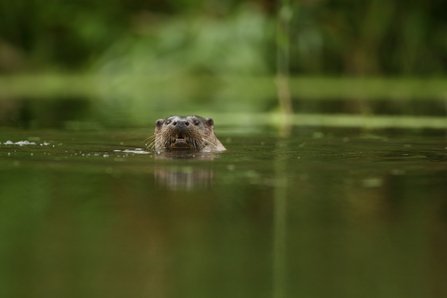The record-breaking temperatures and dry spells of 2022 may seem many weeks behind us, but despite recent rains, England’s rivers, lakes and wetlands are not fully recovered. Even in October, much of the country remained in drought [1] with reservoirs well below the levels we’d expect [2]. Without above-average rainfall to redress the balance, our rivers will start next year already under pressure.
And yet, despite low rainfall, ‘storm overflows’ have been in frequent operation [3]. These sewage system ‘safety valves’ allow water companies to release untreated wastewater into the environment during periods of ‘exceptional rainfall’ [4], to avoid sewage backing up into customers’ homes. Discharges this year, under normal and even dry conditions, are a clear sign that investment in sewage infrastructure has not kept pace with need.
The pressure on our rivers is relentless. Against this backdrop, new statutory plans to put our waters back into good condition should be a welcome thing. Yet we already have such plans, and have done since 2009. ‘River Basin Management Plans’ are intended to set out how we restore our damaged rivers, lakes, estuaries and coastal waters, and the groundwaters beneath our feet. Nearly 5,000 waters across England are monitored against a range of factors to determine whether they are healthy. Pollution from heavy metals and pesticides, levels of excess nutrients that can harm aquatic habitats, the physical condition of rivers, the water levels and flows, and the state of wildlife itself, including fish and aquatic insects, are all assessed. For every assessment failed, the plans set out actions that need to be taken to turn things around.
The 2009 plans were supposed to preside over the recovery of a large proportion of waters by 2015. When that target was largely missed, a second round of plans covered actions to 2021. New plans will take us to 2027 and beyond; a year that was supposed to be the third and final deadline under the legislation that drives these improvements.
With two rounds of plans under our belt, we might expect to be in a strong position. Instead, only 16% of waters are in good ecological health (one half of the assessment) and none meet chemical standards (the other part of the test). This means that none are healthy overall; a baseline of 0%.
Draft plans were consulted on over the summer, with final versions approved today. Figures shared as part of the consultation are revealing [5]. Of the near-5,000 waters that the plans cover, the objective of getting a site to good overall status by 2027 – what should have been the final target date – applies to just 204 waters, or 4%. Only 1 additional water is expected to reach good condition by 2033, a decade from now. For all other waters, revised targets have been set for various later dates, and for the vast majority, 3,651 sites, the target date to bring them into good condition is 2063.


